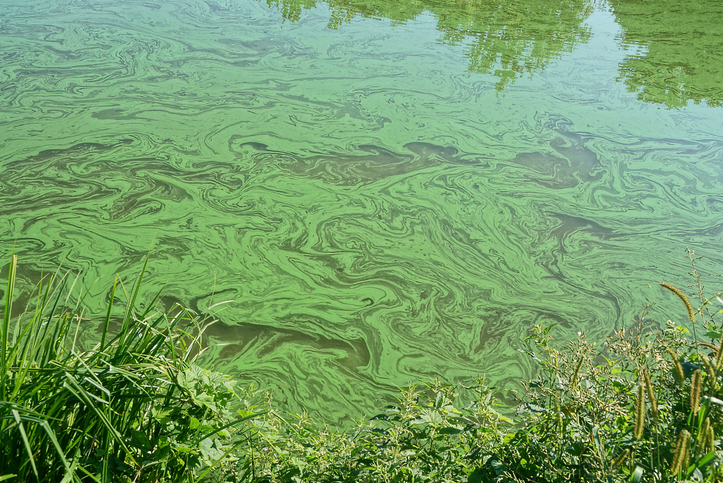Monday, October 6, 2025
Earlier this month and after consultations launched in 2023 and 2024, the federal government published Canada’s State of Per- and Polyfluoroalkyl Substances (PFAS) Report (the “Final Report”) and proposed Risk Management Approach for Per- and Polyfluoroalkyl Substances (PFAS), Excluding Fluoropolymers (the “Risk Management Approach”).
In the Final Report, the government concludes that PFAS should be placed on the toxic substances list under the Canadian Environmental Protection Act, 1999 (CEPA). Note that while the Final Report does not immediately ban any new PFAS, it may be the start of future restrictions.
Together, the Final Report and Risk Management Approach propose a precautionary, class-based approach to the regulation of PFAS in which regulatory measures would apply to all substances under the PFAS class rather than specific varieties of PFAS. The class-based approach acknowledges the challenges of regulating several thousand chemicals individually as is the case with the few varieties of PFAS currently regulated under the Prohibition of Certain Toxic Substances Regulations, 2012 under CEPA.
Notably, fluoropolymers are excluded from the defined PFAS class on the basis that their hazard and exposure profiles may differ from other PFAS. Fluoropolymers will therefore be assessed separately, and have been added to the federal government’s Proposed Plan of Priorities.
Recognizing that PFAS are in wide use in Canada across industries, the federal government has also provided in its Risk Management Approach report proposed risk management measures to be followed in the interim while industry identifies and develops alternatives to PFAS use, where available.

Overview on forever chemicals
Commonly known as “forever chemicals”, PFAS are a group of several thousand man-made chemicals that are found in many frequently used consumer and industrial products, including fire-fighting foams, textiles, drugs, cosmetics, food packaging and electronics. In the environment, PFAS break down at a slow rate and are extremely persistent. PFAS have also been found in humans and animals as well as in the air and various bodies of water.
The Final Report follows public consultations on the Draft State of PFAS Report published in May 2023 and the Updated Draft State of PFAS Report published in July 2024. Details on the Updated Draft State of PFAS Report, much of which remains unchanged in the Final Report, can be found in our previously published bulletin: Canada’s Updated Draft PFAS Report: The Latest on the Emerging Regulation of ‘Forever Chemicals’.
The Final Report concludes that all substances in the defined PFAS class (which excludes fluoropolymers) meet the “toxic substance” criteria set out in section 64 of CEPA. Specifically, it concludes that the substances (i) are or may enter the environment in an amount that could have immediate or long-term harmful effects on the environment or its biological diversity and (ii) may enter the environment in a way that constitutes, or may constitute, a danger in Canada to human life or health.
As a result, the federal government proposes to add the defined class of PFAS to Part 2 of the List of Toxic Substances in Schedule 1 of CEPA. Once a substance is listed under Schedule 1, CEPA empowers the federal government to take a number of risk management measures, including regulations that restrict the use, import, manufacture and release of substances. It is important to note that adding PFAS to Schedule 1 of CEPA does not itself ban or restrict the use of the substances. Instead, it allows federal government to take risk management action under CEPA.
Where a toxic substance is listed in Part 2 of Schedule 1, the government must prioritize pollution prevention actions, which may include total, partial or conditional prohibition, when managing their risks. By adding the entire defined class of PFAS to the list, the government can take a class-based approach to risk management, as opposed to a time-consuming and arguably inefficient approach that examines each of the several thousand PFAS substances individually.
In line with the requirements under section 77(6)(c)(ii) of CEPA, alongside the Final Report, the government published the Risk Management Approach to manage the risks of the defined PFAS class. The Risk Management Approach principally aims to: (i) reduce releases of PFAS into the Canadian environment to avoid adverse effects in a manner that balances environmental protection with economic feasibility; and (ii) reduce human exposure to PFAS, including disproportionately impacted populations.
The government seeks to achieve these objectives through the following phased approach:
- Phase 1: Prohibiting the use of PFAS (excluding fluoropolymers) in firefighting foams (not currently regulated), due to the high potential for environmental and human exposure;
- Phase 2: Prohibiting the use of PFAS (excluding fluoropolymers) in consumer products where alternatives exist. Prioritization of uses for prohibition is based on, and will take into account, costs and benefits, availability of suitable alternatives and other socio-economic considerations. Key products that will be reviewed include:
- Cosmetics;
- Natural health products and non-prescription drugs;
- Food packaging materials and food additives;
- Paint and coating, adhesive and sealant and other building materials available to consumers;
- Consumer mixtures such as cleaning products, waxes and polishes;
- Textiles uses (including in firefighting turnout gear); and
- Ski waxes.
- Phase 3: Prohibiting of the use of PFAS (excluding fluoropolymers) requiring further consideration through stakeholder engagement and further assessments (namely for those which there may not be feasible alternatives), including:
- Fluorinated gas applications;
- Prescription drugs (human and veterinary);
- Medical devices;
- Industrial food contact materials;
- Industrial sectors such as mining and petroleum; and
- Transport and military applications.
The Risk Management Approach also sets out current and upcoming data collection initiatives, as well as certain reporting requirements, aimed at collecting additional information on the class of PFAS. These include:
- Gathering information under a mandatory Notice with respect to certain per- and polyfluoroalkyl substances (PFAS), (the “PFAS Notice”) which was published under section 71 of CEPA on July 27, 2024 and had a reporting deadline of January 29, 2025 (though many organizations have been granted up to a six month extension);
- The addition of 163 individual PFAS to a new Part 1, Group C of the National Pollutant Release Inventory (NPRI), a public inventory of releases, disposals and transfers of pollutants, as confirmed by a notice published in the Canada Gazette on March 8, 2025, which will require organizations to report on such substances to the NPRI starting with calendar year 2025.
- Monitoring existing databases for the presence of PFAS in a range of products such as cosmetics, natural health products and non-prescription drugs; and
- Managing federal contaminated sites through the Federal Contaminated Sites Inventory, which now includes, as part of an update in 2023-2024, a contaminant category that allows users to search easily for federal sites contaminated or impacted by PFAS.

Key takeaways
With the publication of the Final Report, the federal government has started the 60-day consultation period required before adding PFAS to the List of Toxic Substances in Schedule 1 of CEPA. As noted above, adding the defined PFAS class to CEPA Schedule 1 will not in and of itself establish any controls over the substances. Rather, doing so provides a mechanism for the federal government to impose the risk management measures set out in the Risk Management Approach.
While many jurisdictions worldwide are and have been taking decisive action to control and phase out PFAS, Canada is now also taking steps to address this important chemical management issue with its own unique approach. Industry and other stakeholders are invited to submit comments on the Risk Management Approach before the May 7, 2025 deadline.
At a time where PFAS have been thrust to the forefront of public attention, organizations that manufacture, import or use PFAS in their operations, or along their supply chains, must begin preparing for increased regulation.
Written by Talia Gordner, Martin Thiboutot, Ralph Cuervo-Lorens, Sharon G.K. Singh and Claire Lingley of McMillan LLP.
Featured images credit: Getty Images












